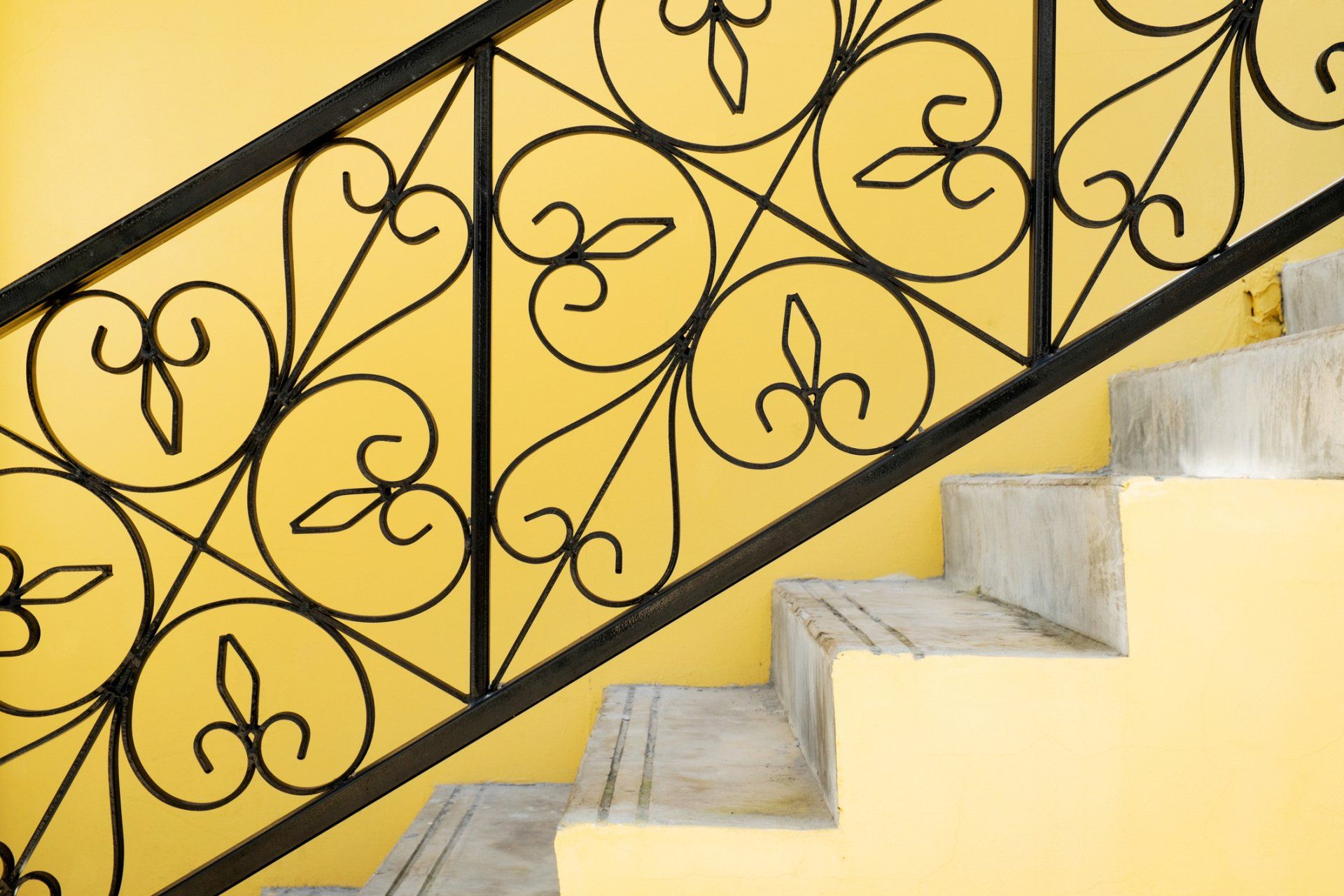Ways an Iron Handrail Can Complement Your Stairway
- By Admin
- •
- 13 Jul, 2019
- •

A handrail is more than a necessity, though it obviously does make traversing the staircase safer. An iron handrail can add to the style of your stairway. Your staircase rail can guide the eye directly to the space or create a connection between the entryway and the rest of the house. Below are some ways to use the handrail to complement your stairway.
Add a Sense of Grandeur
Wrought iron is renowned for its ornamentation. You see it especially in wrought iron fencing, which can feature elaborate scrolls of metal with medallions, finials, and even custom finishes. Some of that ornamentation translates to wrought iron handrails.
Naturally, you probably don't see finials with handrails since you need a smooth rail for your hands. However, you can choose panels with the elaborate scrolls for under the rail. Another option features straight balusters with ornamentation similar to carved wooden balusters.
Wrought iron handrails also often feature a flourish at the end. If you have a classic newel, the newel cap is likely a ball, cone, or figurative topper. That said, many wrought iron handrails don't end in a straight newel but actually bend back around. Indeed, such a presentation will add a definite sense of grandeur to your stairway.
You could also combine the iron with wood for a show-stopping handrail. Typically, the top rail and the newel post are made of wood. The contractors replace the carved balusters with worked wrought iron. The result is a pleasing mix reminiscent of stately manors.
Naturally, you probably don't see finials with handrails since you need a smooth rail for your hands. However, you can choose panels with the elaborate scrolls for under the rail. Another option features straight balusters with ornamentation similar to carved wooden balusters.
Wrought iron handrails also often feature a flourish at the end. If you have a classic newel, the newel cap is likely a ball, cone, or figurative topper. That said, many wrought iron handrails don't end in a straight newel but actually bend back around. Indeed, such a presentation will add a definite sense of grandeur to your stairway.
You could also combine the iron with wood for a show-stopping handrail. Typically, the top rail and the newel post are made of wood. The contractors replace the carved balusters with worked wrought iron. The result is a pleasing mix reminiscent of stately manors.
Accentuate the Lines of the Stairway
Perhaps you don't want to create a sense of grandeur so much as highlight the natural beauty of your staircase. To that end, you might not want a handrail that takes center stage. Instead, you might want a rail that accentuates the form of the staircase itself.
This approach is especially popular for the modern style. Modern style favors minimalism and an emphasis on form. So, if you choose a modern-style handrail, you can bring that sophisticated modernity to your staircase.
An example of a modern-style handrail that accentuates the lines of your stairway would be one made of a tube of metal. Imagine a simple, curving line that draws the eye up the staircase. This style is ideal if your staircase curves.
Let's say your staircase doesn't curve. What's more, you might favor a bit more ornamentation than a simple tube of metal. So, a modern take on a handrail might be one that starts with a straight tube of iron and adds horizontal balusters almost in the manner of a split-rail fence. Such a surprising configuration could complement the angles of your staircase.
This approach is especially popular for the modern style. Modern style favors minimalism and an emphasis on form. So, if you choose a modern-style handrail, you can bring that sophisticated modernity to your staircase.
An example of a modern-style handrail that accentuates the lines of your stairway would be one made of a tube of metal. Imagine a simple, curving line that draws the eye up the staircase. This style is ideal if your staircase curves.
Let's say your staircase doesn't curve. What's more, you might favor a bit more ornamentation than a simple tube of metal. So, a modern take on a handrail might be one that starts with a straight tube of iron and adds horizontal balusters almost in the manner of a split-rail fence. Such a surprising configuration could complement the angles of your staircase.
Keep Up the Continuity
Along the same lines, maybe you don't want to draw attention to the staircase itself so much. Maybe instead you'd like for the staircase to work within the wider whole of your entryway.
For example, you could have a small entryway and not want the staircase to overpower the space. Conversely, a large entryway with vaulted ceilings and an interior balcony might also call for a less-is-more approach to draw out that sense of continuity.
To that end, you'll want a subtle handrail. One of the simple rails described above would work well. Another option is to choose the classic presentation of a handrail, with the top rail and vertical balusters, but in a simple design. Likewise, you could also try the wood and iron handrail but with plain balusters instead of ornamented ones.
To maintain that sense of continuity, you'll want the stairway handrail to match any other railing in the vicinity. So, if you have an interior balcony or a landing, the railing should be consistent.
Give your stairway a unique style by adding a complementary handrail. Visit Capitol City Iron Works to choose your staircase railings.
For example, you could have a small entryway and not want the staircase to overpower the space. Conversely, a large entryway with vaulted ceilings and an interior balcony might also call for a less-is-more approach to draw out that sense of continuity.
To that end, you'll want a subtle handrail. One of the simple rails described above would work well. Another option is to choose the classic presentation of a handrail, with the top rail and vertical balusters, but in a simple design. Likewise, you could also try the wood and iron handrail but with plain balusters instead of ornamented ones.
To maintain that sense of continuity, you'll want the stairway handrail to match any other railing in the vicinity. So, if you have an interior balcony or a landing, the railing should be consistent.
Give your stairway a unique style by adding a complementary handrail. Visit Capitol City Iron Works to choose your staircase railings.
In property enhancement, ornamental fencing is an essential element that adds aesthetic appeal and fortifies security. Choose iron fencing for curb appeal!
Your Juliet balcony needs more than just good looks to keep it safe and sound. Explore three essential reinforcements to fortify your Juliet balcony.
Do you need to add stairs to a building? Read our blog to learn about a few of the staircase options you can pick from and their benefits.
Iron fencing stands out as a timeless and versatile option for guarding any property. Learn about the advantages of iron for fences.
You want to choose your fence carefully — especially since you have so many options. Learn about what factors to consider when you select a fence.
A Juliet balcony is the improvement feature your house needs. Read this blog to learn just why you need a Juliet balcony in your home.
Ironwork makes a beautiful decorative addition to any home. Learn just a few ways to add this beautiful fixture to your home for beauty and value.
If you are looking to equip your property with an iron fence, read this blog to learn what will impact the cost of your fencing project.








